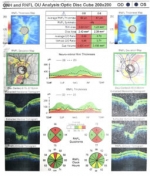News Updates
eScripts are now available at Eye Associates!
An eScript, also known as electronic prescription is an alternative to paper prescriptions and are sent to you by your doctor via email or SMS, allowing you to conveniently access your scripts from your smartphone or email.
Using New Technologies to Treat Macular Degeneration
The Autumn 2021 edition of MacularNEWS looks at how the Macula Research Group is using the same technology that created the COVID-19 vaccine – messenger ribonucleic acid or mRNA – to find new and hopefully better ways of treating retinal diseases, including macular degeneration.
The Australian Save Sight registries
When people ask me how on Earth I decided to be an eye doctor I have to admit my father was one. I had never intended to do what he did and I thought I had ignored all his advice. When he told me that ‘observational’ (a.k.a. ‘Phase 4’ or ‘post-marketing’) studies were needed to show that treatments identified by randomised clinical trials (RCTs) actually worked in routine clinical practice, I thought he was just trying to boost his publication list. It turns out that I was wrong about that too.
Scientific advances in gene therapy, stem cell research and artificial intelligence could all offer future treatments for glaucoma.
As swift and as silent as a black panther, the ‘sneak thief of sight’ struck. Glaucoma had been circling for some time and finally it pounced, reducing my vision and ability to see clearly. One of the world’s leading causes of irreversible blindness, glaucoma affects more than 60 million people globally. It is mainly caused by too much fluid pressure inside the eye, which in turn exerts pressure on the optic nerve, leading to damage. Glaucoma occurs when the nerve cells that form the optic nerve fall susceptible to the constant pressure. It cannot be cured, but in most cases it can be controlled.
Glaucoma Collaborative Care in Action
I think optometrists provide an essential service in glaucoma screening and detection, monitoring stable glaucoma and recognising indicators for early ophthalmology review, providing feedback on the treatment plan and outcomes, and patient education. Optometrists play a critical role in working closely with ophthalmologists to achieve targets and adjust treatments.









